One of the earliest harbingers of the season is the arrival of pussy willows in the flower markets. Their arrival is as much a visual trigger for the re-emergence of plants and the new leaves of spring as Easter decorations, daffodils, and potholes.
You might be happy to know that those eminently pettable twigs are actually natives. (Unlike the vast majority of cut flowers). If you didn’t want to buy them, it is likely that you could harvest a few from the wild since it is a native plant to over half the United States and all the provinces of Canada.
You just need to know where to look. You can generally find salix discolor (pussy willows) along stream banks, at pond margins, in wet meadows and marshy bogs, and anywhere you might find damp soil.
They are tolerant of drier soils as well because of their extensive root systems, which make sure this water-loving plant is properly nourished.
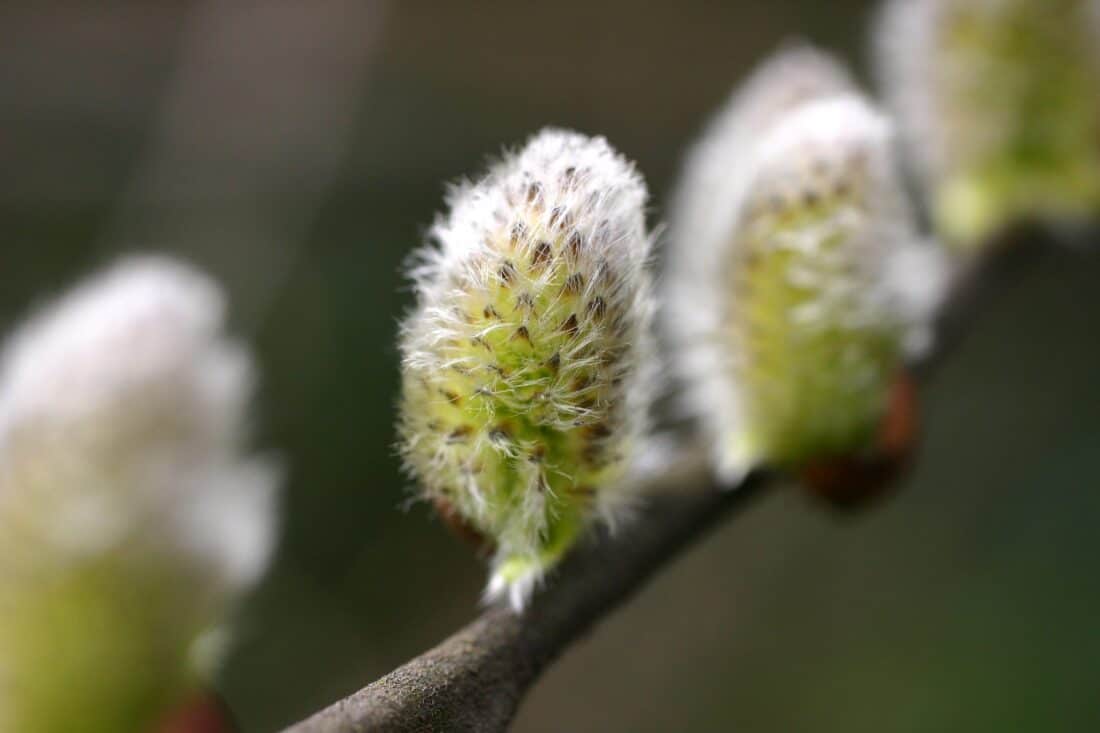
Where to harvest Salix discolor in the wild
In the wild, you will find them in full sun. In the late winter and early spring, they will begin to appear from the haze of leafless brown twigs with their yellow catkins blooms.
If you are, however, trying to pick the famous furry stems, you will have to look closer and earlier. The coveted fuzzy cat paw-like buds (hence the name pussy willow) precede the bloom into a yellow head. These furry buds are called catkins, and as they bloom, they tend to expand and extend into a dangling cottony seed head. (These are also called catkins, but by the time they are bloomed out and extended, they can look very different).
When Do Catkins Appear On Willow Trees?
Catkins typically appear on willow trees in English during the spring months, usually in March or April. These fuzzy, cylindrical clusters contain the tree’s flowers, which release pollen to fertilize the female flowers and produce seeds. Willow trees are known for their beautiful and distinct catkins that signal the beginning of the spring season.
Look for the silvery catkins (when they still look like cat paws) around the vernal equinox – this is when you want to harvest your pussy willow twigs. Once the female flowers emerge, the furry catkins will be gone for the season, and you will have to wait another year until you can enjoy the unique pussy willow catkins again.
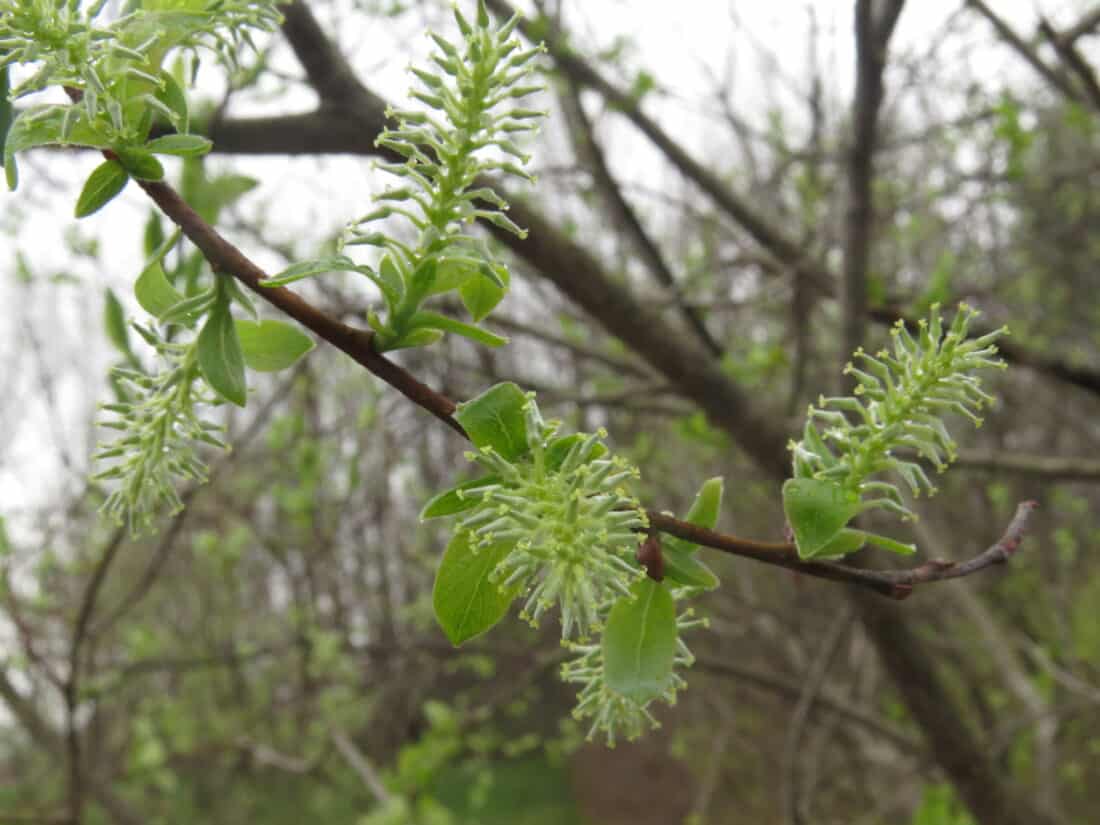
Propagating Pussy Willows
Pussy willows are extremely easy to multiply. They root so easily that harvested stems of almost any size can simply be stuck into moist soil in the spring, and they will take hold with new roots within a few weeks.
To ensure success, choose new growth cuttings at least as thick as a pencil and a foot or more long. Set with the right end up and make sure at least one or two buds are above ground. So, when you buy your bunch for a vase (or harvest it wild), think about planting in your garden rather than throwing them away.
Salix discolor is a fast-growing, weak wooded tree/ shrub that will be most beautiful if it is properly maintained and pruned. Left wild, these woody plants will become a large shrub or small tree (mature height up to about 20′) and will likely become a multi-stemmed messy shrub with a rounded shape.
If you prune it regularly, you will be able to grow longer, and straighter stems that are prettier in a cultivated garden and work well when brought indoors for dramatic floral arrangements.

Growing Salix in your landscape
Willows of all sorts make elegant trees and additions to the landscape. There are hundreds of varieties (some native and some not). Many have interesting features (like dangling branches, twisted stemes, variegated leaves, colored stems, etc).
Grow them to suit your design, but…
DO NOT plant any type of willow near septic stems or other underground water sources. The roots can be aggressive and have a particular desire for penetrating pipes and water lines – often clogging them and causing expensive repairs.
Salix discolor is an all-season plant
Salix discolor (discolor is Latin for bi-colored) is also also known as the Two-Color Willow. The upper leaf surfaces are dark green, while the undersides are silvery-white or gray, creating a striking bicolored effect.
It exhibits distinct features throughout the seasons, making it an attractive and dynamic addition to landscapes. Here are its primary features in all seasons:
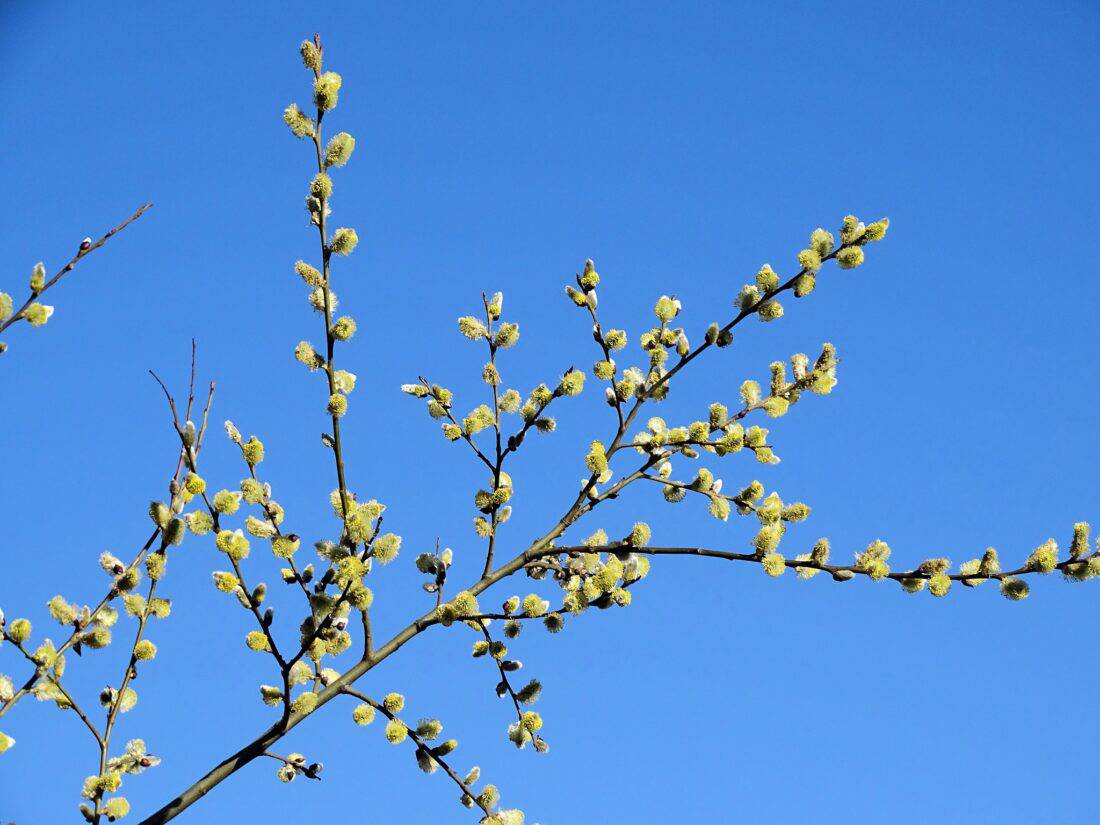
Spring:
– Emergent Catkins: In early spring, Salix Bicolor produces cylindrical catkins that emerge before the leaves. These catkins are often silvery-gray in color and provide a striking contrast against the dark branches, giving the plant its “two-color” name.
– Emerging Leaves: As spring progresses, the shrub’s leaves unfurl. The upper sides of the leaves are dark green, while the undersides maintain their silvery-white or gray color, creating a visually appealing bicolored effect.
– Catkin Abundance: The shrub is covered in an abundance of catkins, providing an early source of nectar for pollinators such as bees and butterflies.
Summer:
– Foliage Maturity: In summer, the leaves of Salix Bicolor mature and provide a dense canopy of dark green foliage with a silvery-white or grayish underside. This combination offers an attractive and unique visual contrast. When the leaves rustle in the wind, the contrast between the two colors can be quite visually appealing.
– Wildlife Activity: The shrub’s dense foliage provides shelter and food for a variety of insects and birds, making it a hub of wildlife activity.
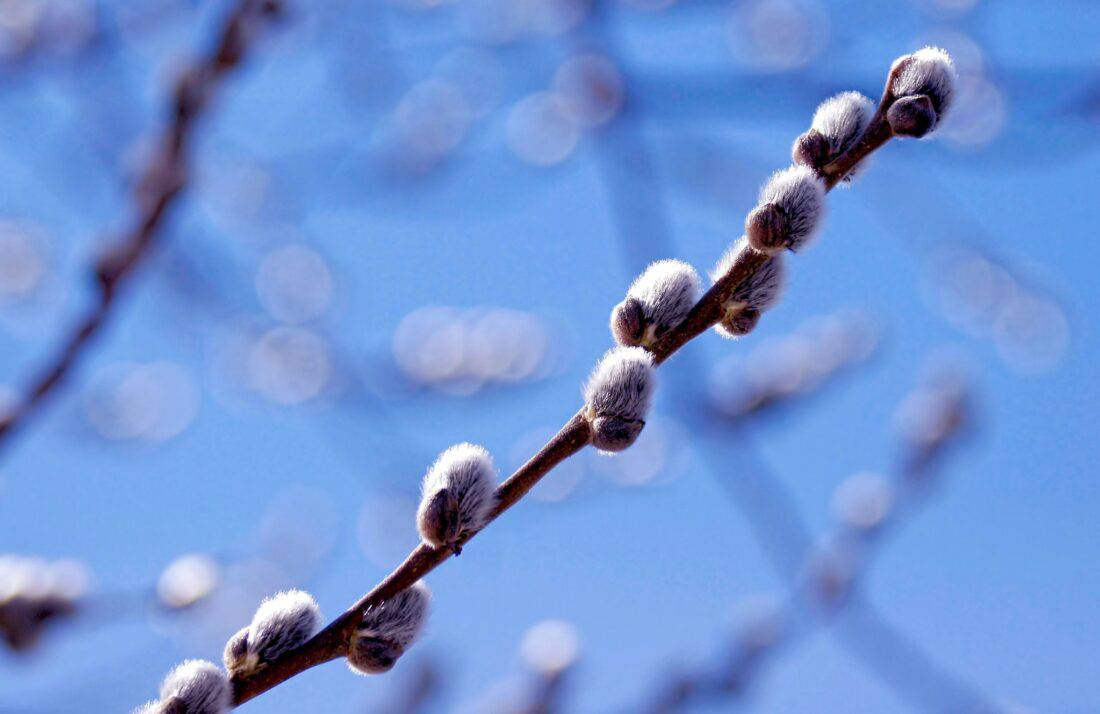
Fall:
– Foliage Transition: The leaves may transition to shades of yellow and brown in the fall, contributing to the season’s color palette. The contrasting upper and lower leaf surfaces remain evident.
Winter:
– Catkin Persistence: Some of the silvery-gray catkins may persist into winter, adding textural interest to the landscape during the colder months.
– Distinctive Bark: In winter, the shrub’s branches, with their smooth and slender dark gray bark, stand out, offering an attractive feature in the winter garden.
Throughout the seasons, Salix Bicolor’s distinctive bicolored leaves, abundant catkins, and unique bark make it an eye-catching and dynamic addition to gardens and natural landscapes. Its ability to retain visual interest year-round adds to its horticultural appeal.
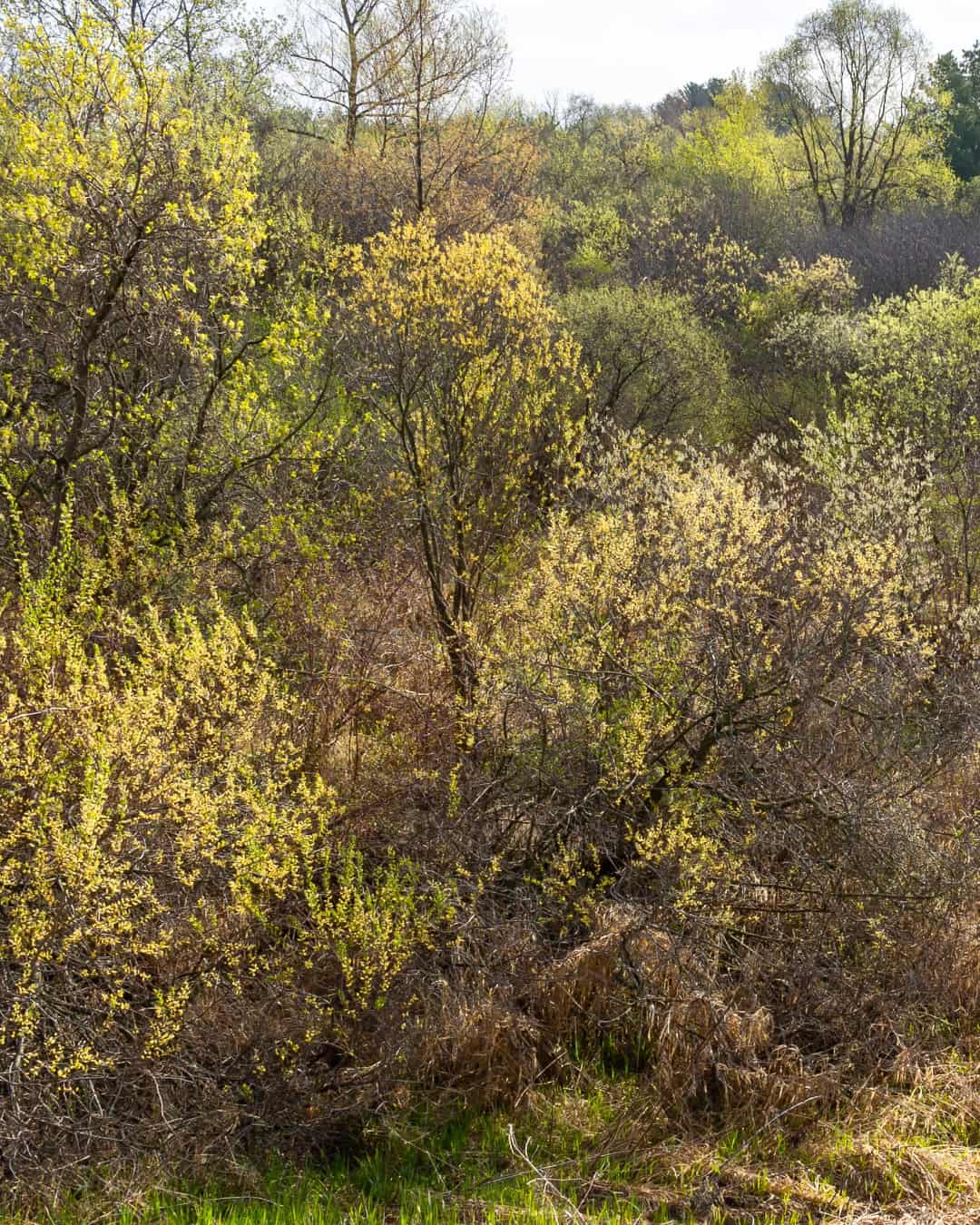
A Keystone Native species
Willows, including Salix discolor, serve as keystone species in wetland environments, fostering biodiversity by providing essential habitat and food for wildlife. Salix Bicolor is a native North American shrub; in its native habitat (wetlands) these willows play a significant ecological role, offering a range of valuable ecosystem services. These services contribute to the health and well-being of the environment and local communities:
1. Soil Stabilization
The extensive root system of Salix discolor helps prevent soil erosion, especially along waterways and wetland areas. By anchoring the soil, it reduces sediment runoff into water bodies, which is crucial for maintaining water quality.
2. Water Quality Improvement
Willows like Salix discolor filter pollutants from water. They absorb excess nutrients, including nitrogen and phosphorus, improving water quality in rivers, streams, and wetlands.
3. Habitat and Biodiversity
Pussy willows provide essential habitat for wildlife. Their dense growth offers shelter and nesting sites for birds, while their leaves and branches support a variety of insects, which, in turn, attract insectivorous birds and other wildlife. This creates a thriving ecosystem.
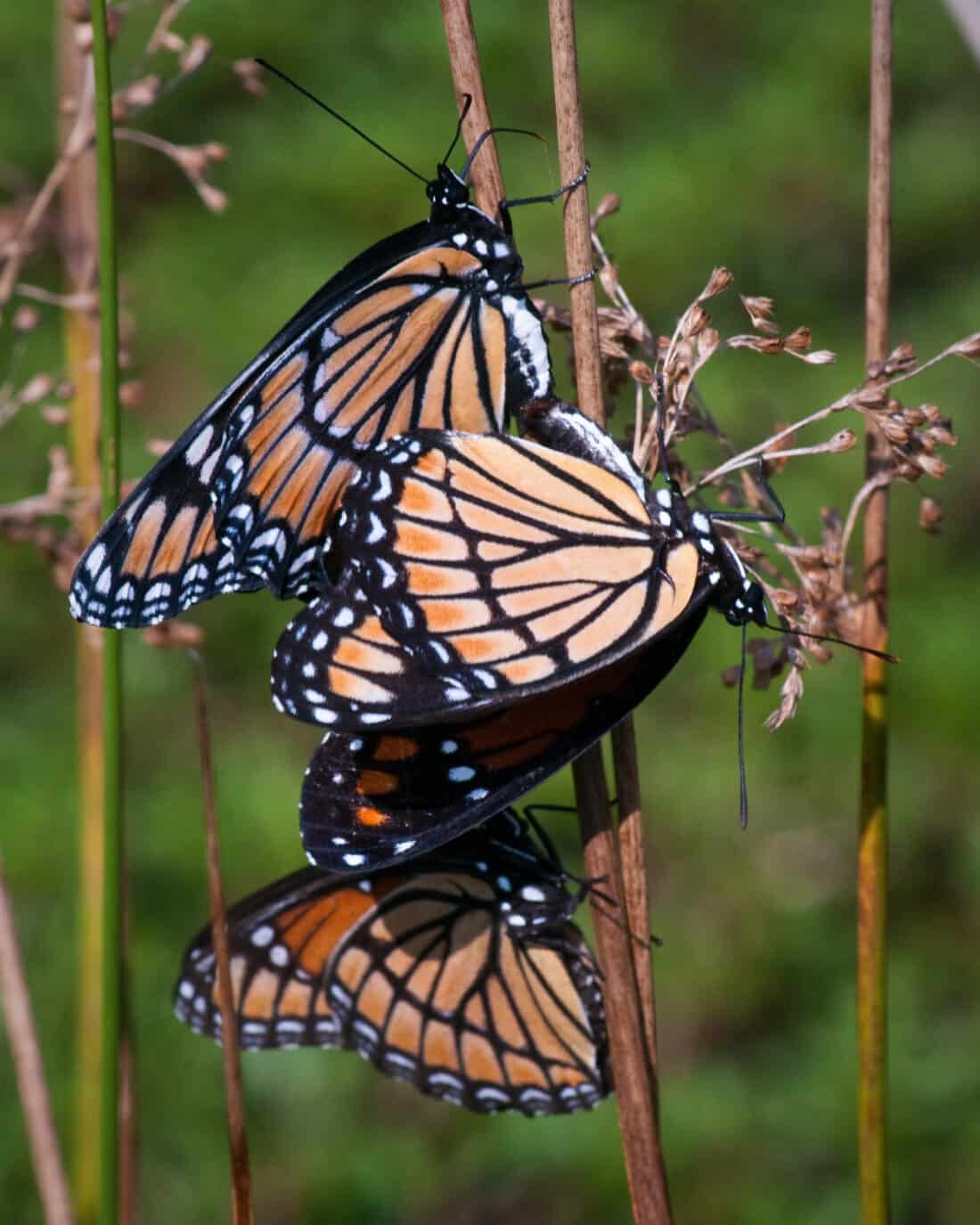
Pussy willows support over 280 butterfly and moth species as well as more than a dozen species of small native bees. Some of the most beloved and beautiful species of butterflies that rely on these shrubs include the Green Comma, White Admiral, Viceroy butterflies, Red-spotted Purple butterflies, Mourning Cloak butterflies, Eastern Tiger Swallowtail, and several Hairstreaks. Additionally, the majestic Luna and Cecropia moths also need the willow.
And if that isn’t enough – The female catkins and pussy willow leaves are also a food source for wood turtles.
4. Carbon Sequestration
Like many trees and shrubs, Salix bicolor plays a role in carbon sequestration. It absorbs carbon dioxide during photosynthesis and stores it in its woody biomass, mitigating the impacts of greenhouse gas emissions.
5. Flood Mitigation
Willows are often planted in flood-prone areas. They can help reduce the severity of floods by slowing the flow of water and stabilizing riverbanks. Their unique ability to thrive in wet soils and tolerate dry soils makes them great choices for rain gardens.

6. Shade and Temperature Regulation
The canopy of Salix provides shade, which can help cool the surrounding environment. This shade can be beneficial for aquatic ecosystems, particularly in maintaining suitable water temperatures for fish and aquatic organisms. In the wild, pussy willows will create dense thickets that are homes to many small mammals.
7. Aesthetic and Recreational Value
The presence of native plants like Salix discolor enhances the visual appeal of natural landscapes. This aesthetic value contributes to the well-being of people who engage in recreational activities such as birdwatching, hiking, and wildlife photography.
8. Medicinal Uses
Historically, willow species have been used for their medicinal properties. The bark of Salix Bicolor contains salicin, a natural compound with pain-relieving and anti-inflammatory properties, which has been used to make aspirin.
Indigenous peoples, such as the Ojibwa, used the bark of Salix Bicolor for its medicinal properties. It was brewed into a tea to alleviate pain and fever.
9. Educational Opportunities
Native plants like Salix Bicolor offer opportunities for environmental education. They can be used to teach people about the importance of native flora and their role in maintaining ecological balance.
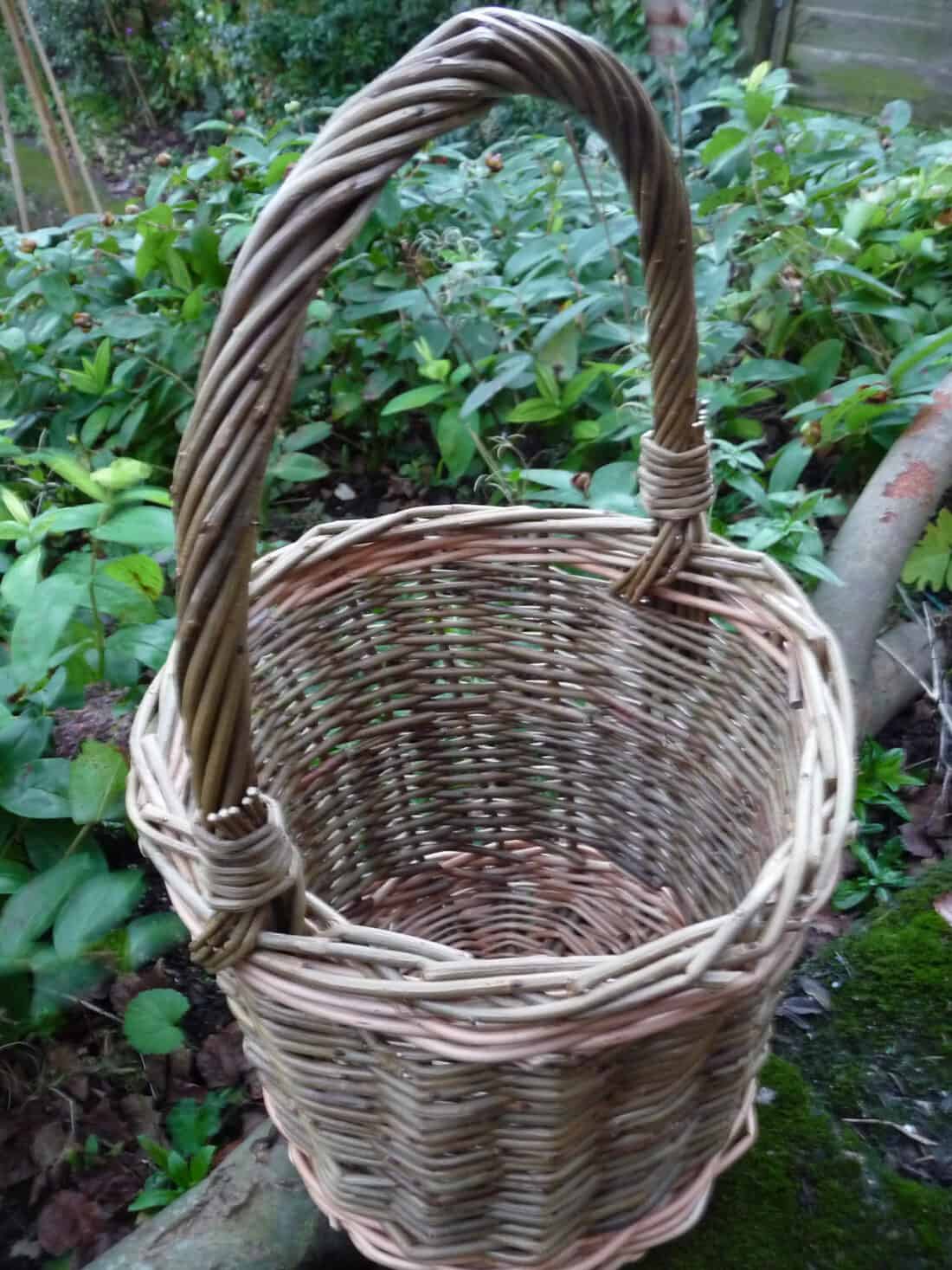
10. Supporting Traditional Arts and practices
In some Indigenous cultures of North America, willow branches are used for basketry and crafts, preserving traditional skills and cultural heritage.
11. Willow Symbolism
In some cultures, willows, including Salix Bicolor, were associated with wisdom and mystical knowledge, magical powers, and enchantment (often featuring tales of transformation). Willow branches were used for divination and dowsing. And in Victorian times, willow trees were often associated with sorrow and mourning. You will see them as common motifs on cemetery headstones of the time.
12. Historic Dyes
Willows were historically used to produce dyes for textiles, and different willow species contributed to a range of colors, including yellows and browns.
american pussy willow
TL;DR – The American Pussy Willow
The American pussy willow, known scientifically as Salix discolor, is a species of willow uniquely native to North America. Many other varieties of willow – roughly 350 – 500 – are native to places around the world but the glaucous willow (salix discolor) is special to North America. Interestingly – most Salix are are native to the northern hemisphere and are much less common south of the equator.
Salix discolor It is characterized by its distinctive furry catkins that appear in early spring before the leaves emerge. This plant is commonly found in wetland areas and along riverbanks, where it provides important habitat and food for wildlife. The American pussy willow is a popular choice for gardeners looking to add a unique touch to their landscapes with its striking appearance and early bloom time.
I love Pussy Willows and in fact have been looking at some in catalogs. They would be great in arrangements.
Your post is timely. My husband and I just went foraging for branches along the Deschutes River. I’ve been eyeing these branches each spring:
http://etsyhighdesertdiva.blogspot.com/2009/01/outtakes.html
I was surprised to find pussy willow buds on them! I had no idea the branches of pussy willow could get such intense color.
We did stick some of the branches in our yard…instant shrubs. I’ll move the ones we put near the septic lines, however….just in case they do take root.
Love the Pussy Willows! I’ve got a big vase full of them on my Dining Room table and you know, they are starting to grow roots!